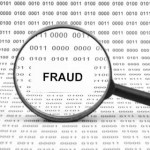
This last week, the 10th Anniversary of the Brand Protection and Anti Counterfeiting Summit took place in Berlin, with focus on subjects such as how to reduce online counterfeiting, how to dismantle, deter, detect and prevent copyright theft and what enforcement strategies are used to overcome global infringement.
Over the past 10 years, this event has hosted over 1000 leaders from 70 different countries, becoming one of the most important events of its kind set in Europe. Always bringing fresh ideas on how to maximise protection in the businesses and avoid counterfeit, one thing that can be relied on is the quality of the Whitepapers created every year ahead of the Summit by the event organizer Legal IQ.
This year, they interviewed brand protection experts from the three most counterfeited industries: Fashion, Film and Sporting Goods. The goal was to gather an understanding of how they fight counterfeit activity in their business. The Fashion sector was represented by Victoria Swedjemark of Björn Borg AB; while talking about the Film and Sporting Goods industries were Kieron Sharp (Federation Against Copyright Theft) and Dr Jochen Schaefer, Legal Counsel of World Confederation of Sporting Goods.
According to them there are 5 areas you need to possess complete understanding of in order to protect and maintain the integrity of your products: Strategy, Framework, Execution, Pitfalls, Status. These are some of the tips they shared:
1. Strategy: The first and, perhaps, most important pillar is to have a strong and well-defined strategy. From taking a pragmatic approach when dealing with the issue, to being sure you have your rights protected at the source, there’s no one single defined path to follow here. You should find the strategy that best fits to your brand. However, all the interviewed agreed on one point: you should employ the right legal partners, people “who understand the online environment and use intelligence and information in the right way”.
2. Framework, or how you should organise your strategy. Firstly, decide what your primary brand is. Secondly, monitor activities, learn from previous experiences (of your own and of others that may have been in similar situations) and file for trademark where necessary.
3. Execution: a constant monitoring is basic in any brand protection strategy, always keep in mind that your goal is to obtain evidence that proves criminal enterprises are doing something illegal. Also, do not forget that if you are operating in different territories, your strategy should vary in accordance with the law of these territories.
4. Pitfalls: Knowing which battles are worth going after and being able to get the timing and balance of protection right are important considerations. You may encounter difficulties throughout the processes, but being aware of them and being able to define them before they happen will surely help your goals.
5. Status: The importance of the brand protection is an issue that is gaining increased awareness by most brands. Recent government and parliament recognition helps to protect the status of your assets or content, fighting against counterfeit and piracy.
With an estimated magnitude of over $600 billion (and growing), the trafficking of counterfeit goods worldwide is constantly an important issue for brands all over the world. When working out how to minimise brand protection abuse, every company should count with a strong brand protection strategy that defends its assets from the very beginning. So when creating and developing this strategy it is extremely important to deal with the right legal experts, who understand what your brand needs are, what to monitor and when to take legal actions against infringers.

